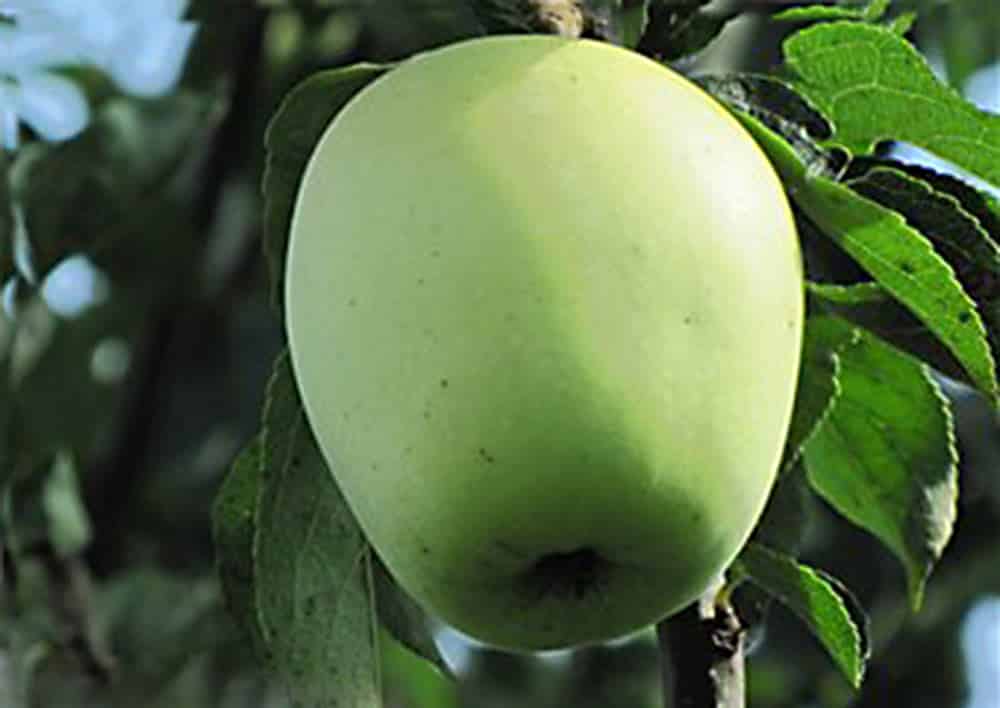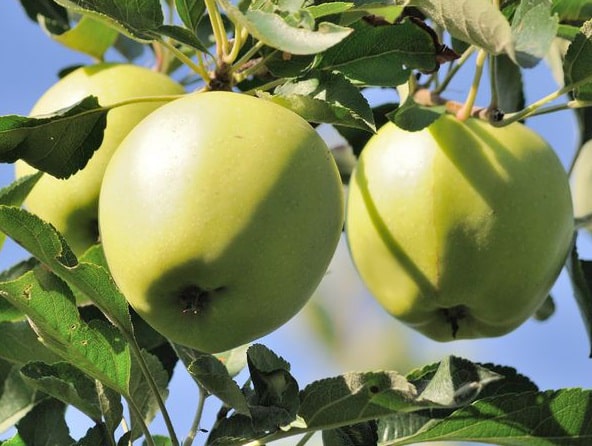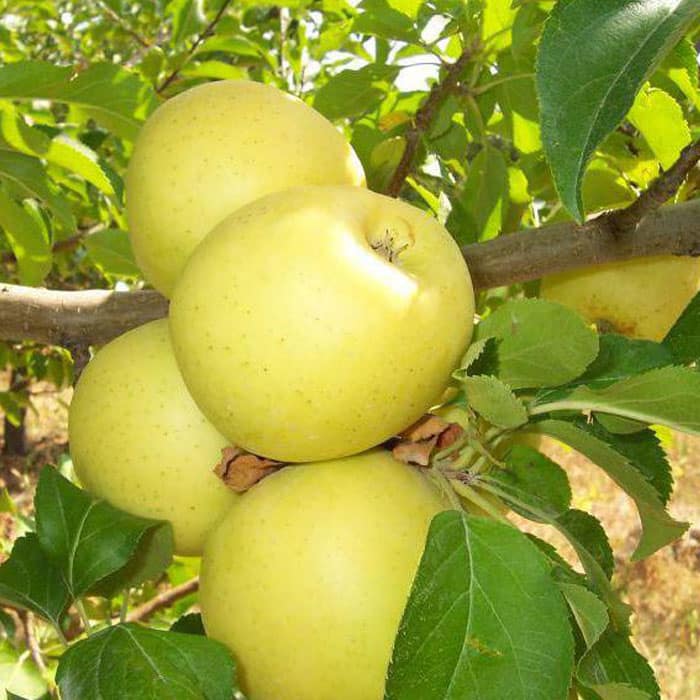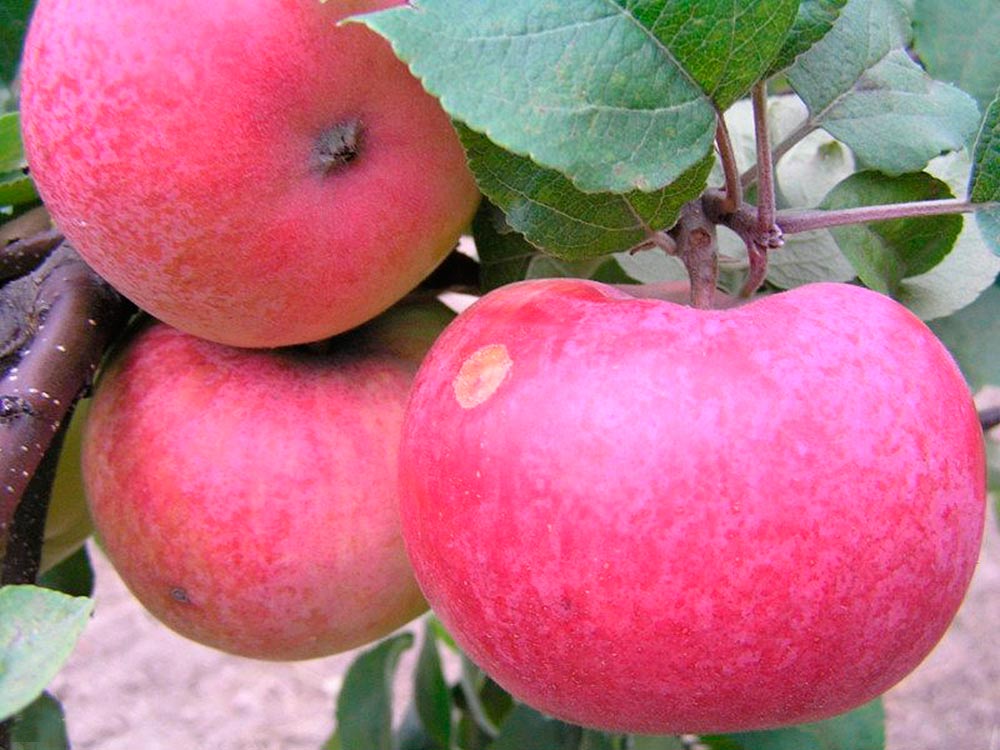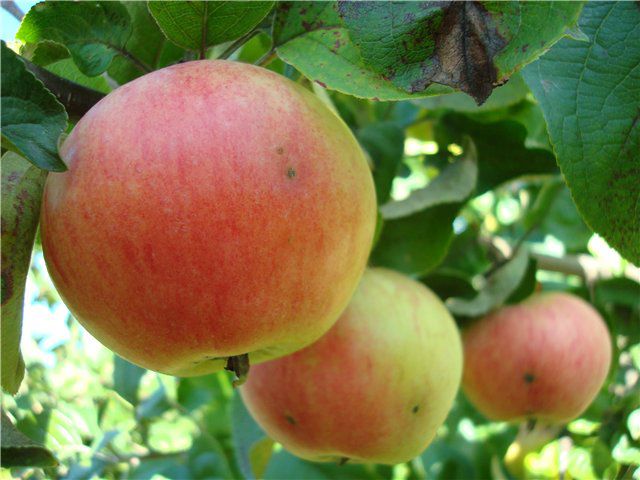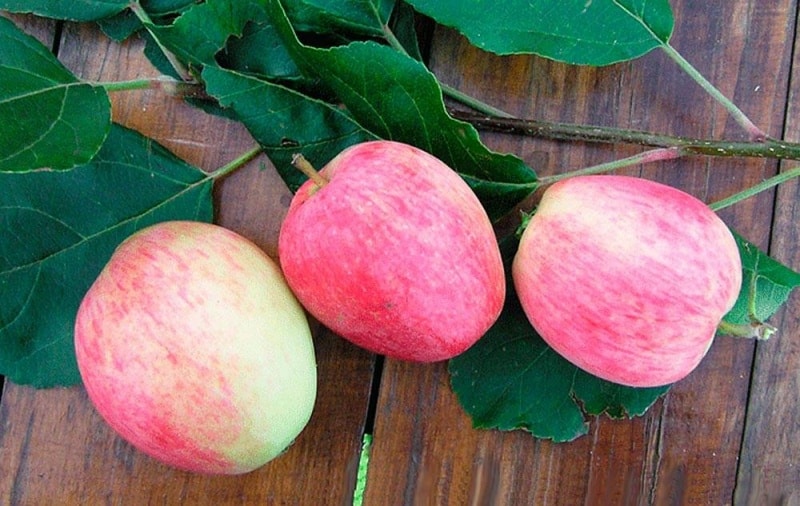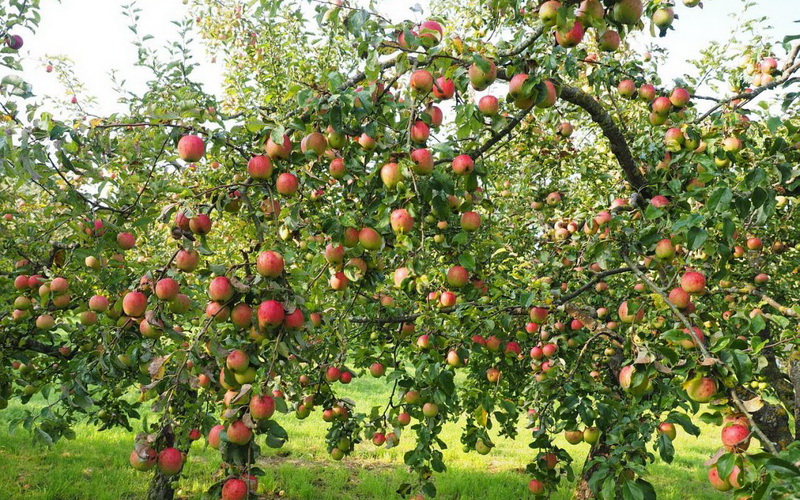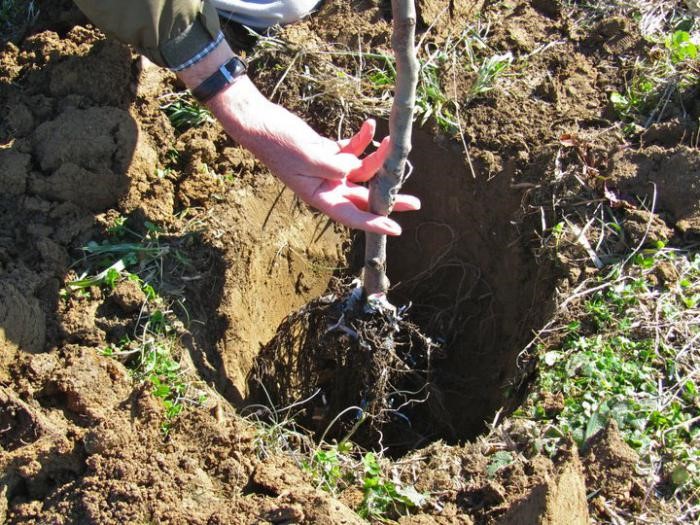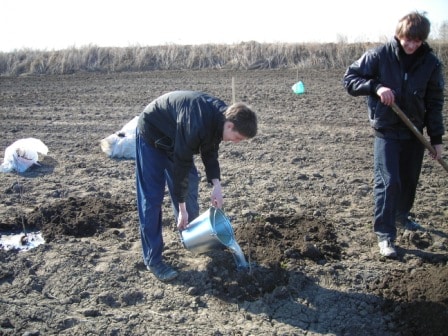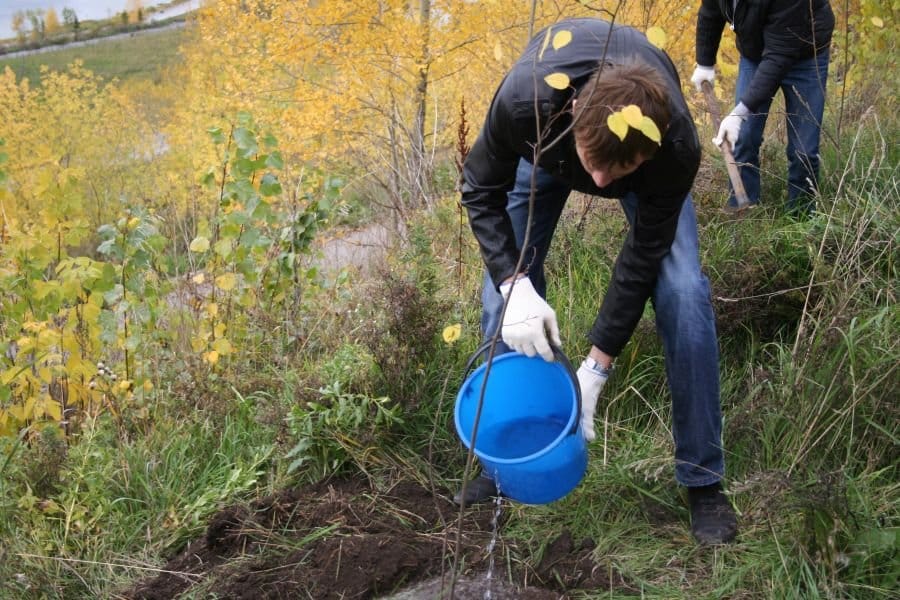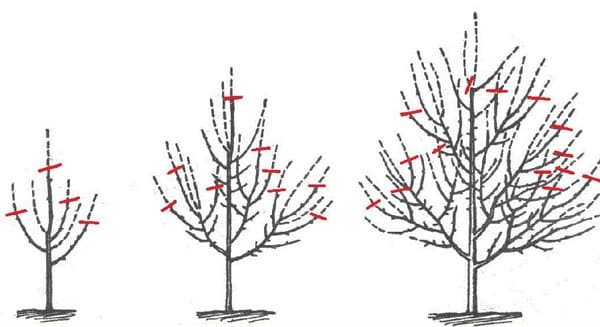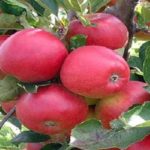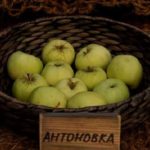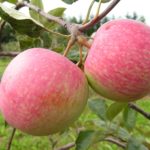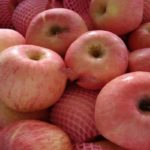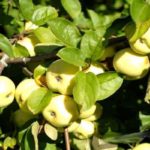Not all Russian residents grow apricots or peaches in their dacha or garden, but almost everyone plants apple trees. These fruit trees are less demanding, their fruits are well transported, stored for a long time, are universally used, rich in pectin, organic acids, and vitamin C. The Arkad apple tree is grown to obtain an early harvest of large and sweet apples. The fruits are white-green in color with thin skin and juicy pulp and ripen by early August.
- History of apple tree breeding
- Varieties of the Arkad variety and description
- Biryukova
- Sugar
- Yellow
- Pink
- Columnar
- On a dwarf rootstock
- What is characteristic of this culture?
- Growing area
- Resistance to frost, insects and diseases
- Harvest
- Beginning of fruiting
- Self-fertility and pollinating varieties
- Period of tree flowering and fruit ripening
- Tasting assessment
- Apple collection and storage
- Landing nuances
- Preparing seedlings
- Choosing the best place
- Required soil composition and planting hole dimensions
- Landing scheme and technology
- Care instructions
- Watering frequency
- Foliar and root feeding
- Crown trimming
- Prevention of diseases and insects
- Preparing apple trees for winter in gardens and farmsteads
History of apple tree breeding
Summer Arkad has been planted for a very long time, but who created this early variety is unknown. Such a tree grew in the estate of Leo Tolstoy, and the writer liked the sweet apples with a delicate aroma. There is no evidence that apple trees with this name first began to be planted in Bashkiria, as indicated in old sources.
Varieties of the Arkad variety and description
Every year, breeders create hybrids of fruit trees that have improved qualities. The Arkad apple tree boasts ease of care, resistance to frost and disease. The variety has several subspecies that differ from each other:
- fruit weight and color;
- shades of taste;
- ripening time;
In addition, the trees have different crown shapes and different heights. Seedlings of the Arkad Sugar, Summer, and Smoky varieties are sold in nurseries and on the market.
Biryukova
The apple tree is characterized by exceptional winter hardiness, which grows up to 4 meters in height and has a dense crown that is formed from rounded shoots. The variety was named after the name of the breeder who pollinated Arkad winter with pollen from a seedling he created.
The tree blooms in May, and in early August the apples ripen, differing:
- sweet and sour taste;
- green skin;
- gentle blush;
- subtle aroma.
The fruit weighs about 90 g, the weight of the largest specimens reaches 120 grams. Up to 7 buckets of fruit are collected from one plant. The apple tree tolerates temperature changes and frosts, but suffers from bacterial diseases and is affected by fungi.
Sugar
The trees of this early ripening Arkad variety are very powerful, withstand harsh winters, and produce a harvest every year. Large apples have excellent taste, thin green skin, granular pulp, weigh about 160 g. The fruits begin to be picked at the end of July, they are stored for up to a month, and do not lose their presentation during transportation.
Yellow
The Arkad summer variety has an average yield, but bears fruit every year. About 6 buckets of apples are collected from the tree, covered with shiny golden skin and having slightly tart flesh. Arkad yellow does not die in frosts up to 35 degrees, but is not grown on an industrial scale, since the fruits quickly deteriorate and lose their presentation during transportation. Apples are used to make jams, make juices, and preserve compotes for the winter.
Pink
The apple tree of this variety has a compact crown formed by thin branches and grows well on loam and loose sandy loam soils. The fruits, weighing up to 70 g, ripen in July, are round in shape, have a beautiful light yellow color, and are decorated with crimson stripes.
Columnar
Compact trees without side branches are easy to form, require almost no pruning, and bloom very beautifully. Such apple trees, which are a variety of Arkad, inherit winter hardiness and taste from it, and begin to bear fruit the next year. A columnar tree takes up less space on the site and does not differ much in agricultural technology from the variety.
On a dwarf rootstock
The tree of this Arcade variety is not much higher than 2 meters in height, but tolerates more severe frosts than its closest relatives. Apple trees on dwarf rootstocks thrive in cold climates.
What is characteristic of this culture?
All subspecies of the Arkad variety are distinguished by early ripening, good yield, ease of care, resistance to adverse conditions, and universal use of fruits.
Growing area
Arkad apple trees take root in temperate climates, are cultivated in the mid-latitudes of the European part of Russia, in the Urals, Siberia and the southern regions, and bear fruit in the Volga-Vyatka region.
Resistance to frost, insects and diseases
The trees can withstand temperatures below 30 °C, but apple trees are not immune to fruit rot and powdery mildew and are affected by scab. Harm to the culture is caused by:
- scale insects and mites;
- hawthorns and aphids;
- flower beetles and weevils.
Spraying with urea helps prevent the appearance of insects; to prevent diseases, trees are treated with a solution of potassium chloride.
Harvest
Apples of all Arcade subspecies ripen in late July - early August. They need to be harvested on time, as the fruits quickly fall off and spoil. On average, one low tree produces no more than 7 buckets of fruit.
Beginning of fruiting
The first apples on the columnar varieties ripen the following July or August, and the harvest weight can reach 3 kg. In the remaining subspecies of the Arkad variety, fruiting begins in the second year, and the peak occurs in the 5th or 6th year.
Self-fertility and pollinating varieties
Every spring, the trees bloom luxuriantly, but to prevent the ovary from falling off, a large number of fruits ripen, early varieties of apple trees should be placed nearby, acting as pollinators.
Period of tree flowering and fruit ripening
Arcades are planted in regions with a cool climate, where there is snow in March or even April; apple trees produce buds when the weather is warm and bloom in May. The fruits are picked in the last ten days of July or in the first half of August.
Tasting assessment
Apples Arkad Rozovaya, Sugar, Biryukova have a pleasant sweet and sour taste, have juicy pulp, a delicate aroma and deserve the highest tasting rating. The fruits of the yellow variety are not suitable for transportation, they have a tart aftertaste, lack of sourness and earn 4.1 points.
Apple collection and storage
Ripe fruits are picked by hand by twisting until they begin to crumble. Arcade trees are not tall, so it is not difficult to get apples. Fruits of early varieties should not be stored for more than a month, even in the refrigerator, as they begin to rot or dry out. It’s better to immediately roll up compotes, cook jams, or just eat them fresh.
Landing nuances
The roots of adult Arkad apple trees are at a depth of 60 to 70 cm and occupy much more space than the compact crown. Before buying a tree to grow, it is worth studying the requirements for agricultural technology.
Preparing seedlings
To prevent the roots of a young apple tree from drying out, they are dipped in a mash made from clay, earth and mullein; the ends are shortened with pruning shears before being placed in the ground.
Choosing the best place
Experts advise planting apple trees in an area where crops that deplete the soil have not grown before. The tree will not bear fruit in the shade; a place for it must be selected in the sun and where the water is not close to the surface.
Required soil composition and planting hole dimensions
The hole for the apple tree is dug in advance; its width should be at least a meter and its depth should be at least 80 cm. Nut shells are placed at the bottom, the earth is mixed with humus and ash, and superphosphate is added. The holes are half filled with topsoil.
Landing scheme and technology
Compact, low-growing apple trees are placed every 4 meters, columnar ones - every 2. A peg is driven into the prepared hole, the roots of the tree are dried, planted in the ground and straightened. The grafting site is not covered, but left 10 centimeters above the soil surface, the soil is compacted and watered.
Care instructions
Young apple trees must be protected from sunburn and frost, mulched, fed, and pruned.
Watering frequency
The seedlings are moistened as soon as the soil in the tree trunk dries out. If the weather is dry, adult trees need moisture at least 2 times a month. The first watering is done when the buds appear, the last - in late autumn.
Foliar and root feeding
In order for an apple tree to please with a large number of juicy and large fruits, in addition to moisture, it must receive minerals and organic matter. In early spring, the plant requires nitrogen, which is present in ammonium nitrate. When buds form and in the fall, fertilizers containing phosphorus and potassium are applied.
The tree responds positively to foliar feeding with these microelements. Spraying foliage not only increases yield, but also strengthens the apple tree’s immunity to disease.
Crown trimming
In late autumn, dried and weak branches are removed, mummified remains of the fruit are collected and burned.In the spring, gardeners thin out the crown, getting rid of diseased, old and inward shoots that do not form an ovary.
Prevention of diseases and insects
The Arkad variety apple tree suffers from scab caused by the Venturia fungus and is affected by bacteria. Spraying the ground part with 3% solutions of ammonium nitrate and potassium chloride helps protect the tree from harmful microorganisms.
To prevent insect invasion, plants are treated with preparations containing copper and urea, and when insects appear, insecticides are used.
Preparing apple trees for winter in gardens and farmsteads
To prevent fruit trees from suffering from severe cold, which is typical for mid-latitudes, all work on the site is stopped until the ground freezes. Preparing the apple tree for winter includes:
- Cleaning from fruit residues and weeds.
- Removing dried and diseased branches.
- Abundant watering to retain moisture.
- Spraying with pest control solutions.
- Fertilizer application.
Tree trunks need to be whitened with lime, which protects the bark from freezing, and wrapped in roofing felt or other material to prevent hares from chewing on the shoots. The roots of young seedlings are covered with pine needles, dry leaves or straw for the winter.

